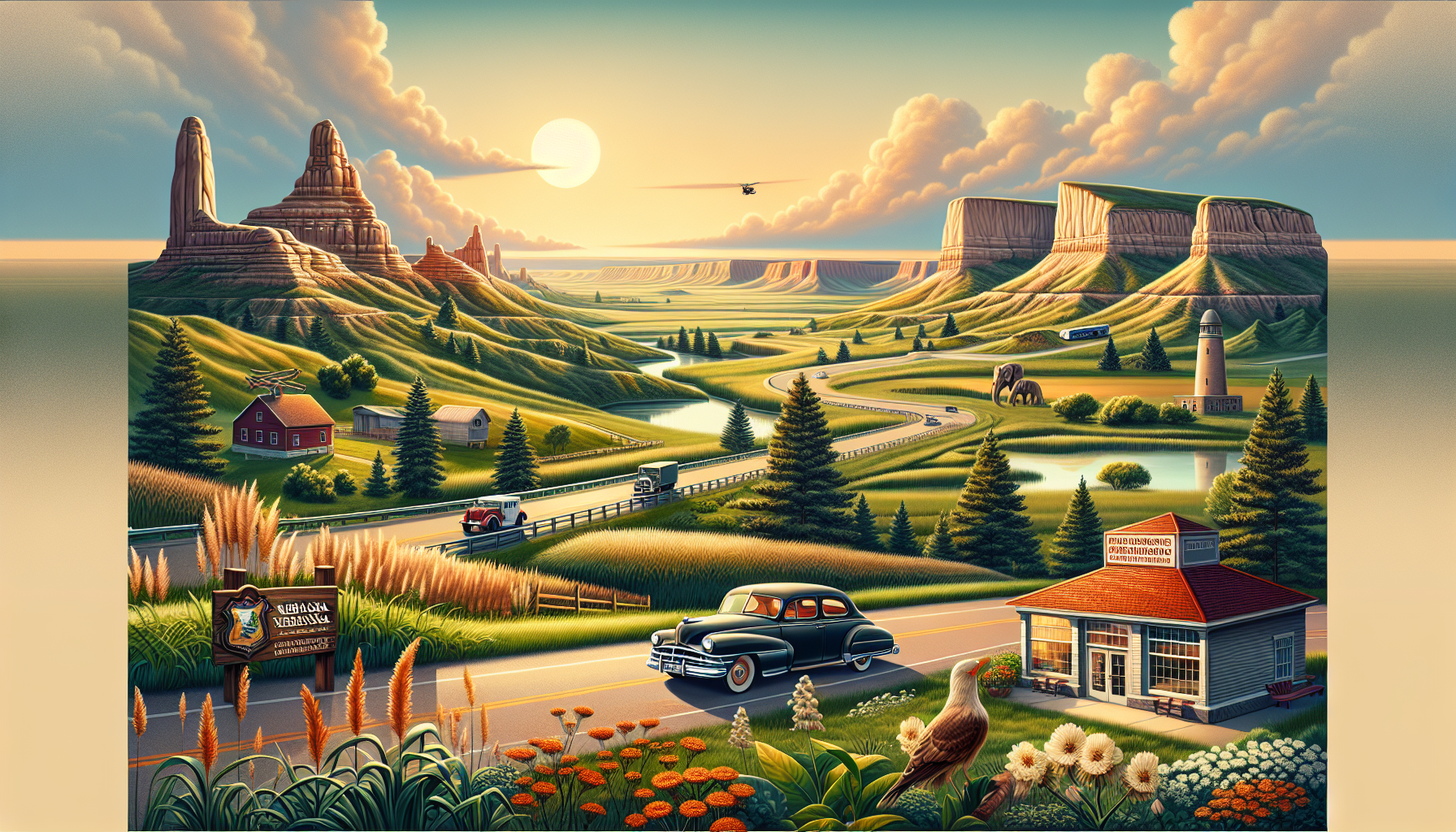Traveling Through Nebraska's Sandhills Conservation Initiative

The Sandhills Conservation Initiative is a collaborative effort aimed at preserving the unique ecosystem of the Sandhills region in north-central Nebraska. This vast area, spanning nearly 20,000 square miles, is characterized by rolling hills of grass-covered sand dunes, making it one of the largest and most intact grasslands in the United States. The initiative seeks to balance human activities such as ranching, tourism, and energy development with the need to conserve the region's natural resources and biodiversity.
A key component of the Sandhills Conservation Initiative is the protection of the region's fragile hydrology. The Sandhills are home to the Ogallala Aquifer, one of the largest underground water sources in the world, which supplies drinking water to millions of people and supports agriculture in the region. Efforts to conserve this resource include implementing sustainable irrigation practices and restoring natural habitats that help recharge the aquifer. For example, the Nature Conservancy has worked with local landowners to restore wet meadows and riverside corridors, increasing water infiltration and reducing erosion.
The Sandhills are also home to a diverse array of wildlife, including iconic species such as the greater prairie chicken and the sandhill crane. The initiative works to conserve and restore habitats for these and other species through a combination of land acquisition, restoration, and land-use planning. The Nebraska Game and Parks Commission, for instance, has established a network of wildlife management areas and public access areas to provide habitat for prairie chickens and other grassland species.
The Nebraska Sandhills also hold significant cultural and historical value, with many archaeological sites and historic ranches scattered throughout the region. The Sandhills Conservation Initiative recognizes the importance of preserving this cultural heritage and works to protect these sites through partnerships with landowners, Native American tribes, and local communities. For example, the University of Nebraska has collaborated with the Oglala Sioux Tribe to document and protect archaeological sites on tribal lands.
Despite the progress made by the Sandhills Conservation Initiative, the region remains vulnerable to threats such as wind energy development, oil and gas extraction, and urbanization. To address these challenges, the initiative encourages sustainable land-use practices and promotes tourism as a way to support the local economy while minimizing environmental impacts. By working together to conserve the Sandhills, stakeholders can ensure the long-term health of this unique and irreplaceable ecosystem.
The Sandhills Conservation Initiative serves as a model for collaborative conservation efforts in other parts of the country, demonstrating that effective conservation can be achieved through partnerships between local communities, landowners, and conservation organizations. As the region continues to evolve, the initiative's commitment to balancing human needs with environmental protection will be essential for preserving the natural beauty and cultural significance of the Nebraska Sandhills.
One notable example of successful conservation is the Niobrara National Scenic River, a 76-mile section of the Niobrara River that flows through the Sandhills. Efforts by the National Park Service and other partners have helped protect this pristine waterway and the adjacent land, preserving a critical habitat for species such as the river otter and the least tern.
The Sandhills Conservation Initiative continues to evolve, with ongoing efforts to engage local communities, build partnerships, and explore innovative solutions to the challenges facing the region. As a model for collaborative conservation, the initiative provides a powerful reminder of the importance of working together to preserve our natural and cultural heritage.
The vast and rolling hills of the Nebraska Sandhills, including their nearby towns like Valentine, serve as an ideal location for the Conservation Initiative, showcasing a symbiotic relationship between ecological balance and economic growth.
A key component of the Sandhills Conservation Initiative is the protection of the region's fragile hydrology. The Sandhills are home to the Ogallala Aquifer, one of the largest underground water sources in the world, which supplies drinking water to millions of people and supports agriculture in the region. Efforts to conserve this resource include implementing sustainable irrigation practices and restoring natural habitats that help recharge the aquifer. For example, the Nature Conservancy has worked with local landowners to restore wet meadows and riverside corridors, increasing water infiltration and reducing erosion.
The Sandhills are also home to a diverse array of wildlife, including iconic species such as the greater prairie chicken and the sandhill crane. The initiative works to conserve and restore habitats for these and other species through a combination of land acquisition, restoration, and land-use planning. The Nebraska Game and Parks Commission, for instance, has established a network of wildlife management areas and public access areas to provide habitat for prairie chickens and other grassland species.
The Nebraska Sandhills also hold significant cultural and historical value, with many archaeological sites and historic ranches scattered throughout the region. The Sandhills Conservation Initiative recognizes the importance of preserving this cultural heritage and works to protect these sites through partnerships with landowners, Native American tribes, and local communities. For example, the University of Nebraska has collaborated with the Oglala Sioux Tribe to document and protect archaeological sites on tribal lands.
Despite the progress made by the Sandhills Conservation Initiative, the region remains vulnerable to threats such as wind energy development, oil and gas extraction, and urbanization. To address these challenges, the initiative encourages sustainable land-use practices and promotes tourism as a way to support the local economy while minimizing environmental impacts. By working together to conserve the Sandhills, stakeholders can ensure the long-term health of this unique and irreplaceable ecosystem.
The Sandhills Conservation Initiative serves as a model for collaborative conservation efforts in other parts of the country, demonstrating that effective conservation can be achieved through partnerships between local communities, landowners, and conservation organizations. As the region continues to evolve, the initiative's commitment to balancing human needs with environmental protection will be essential for preserving the natural beauty and cultural significance of the Nebraska Sandhills.
One notable example of successful conservation is the Niobrara National Scenic River, a 76-mile section of the Niobrara River that flows through the Sandhills. Efforts by the National Park Service and other partners have helped protect this pristine waterway and the adjacent land, preserving a critical habitat for species such as the river otter and the least tern.
The Sandhills Conservation Initiative continues to evolve, with ongoing efforts to engage local communities, build partnerships, and explore innovative solutions to the challenges facing the region. As a model for collaborative conservation, the initiative provides a powerful reminder of the importance of working together to preserve our natural and cultural heritage.
The vast and rolling hills of the Nebraska Sandhills, including their nearby towns like Valentine, serve as an ideal location for the Conservation Initiative, showcasing a symbiotic relationship between ecological balance and economic growth.
